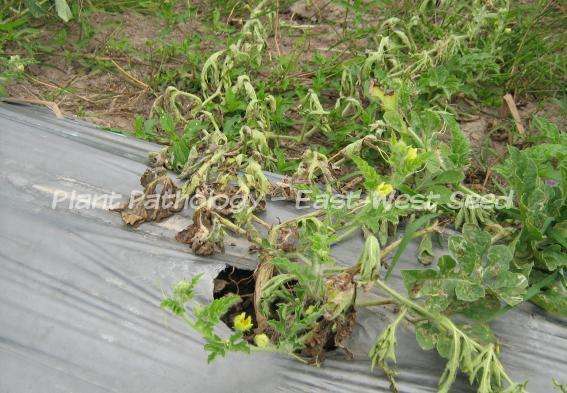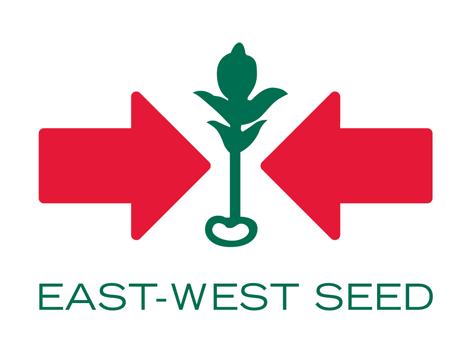Causal Agent:
Fungus (Fusarium oxysporum f.sp. niveum)
| Characteristic Symptoms: | |
 |
Affected plants show general leaf yellowing starting with the older leaves that eventually wilt. |
 |
Once wilting occurs, the foliage becomes desiccated and necrotic and the plant may die within 2-3 days. |
 |
Vascular discoloration of infected stem and roots are important diagnostic symptoms. |
 |
One-sided wilt may also occur. |
| Conditions for Disease Development: | |
 |
The pathogen is soil-borne and is host-specific (i.e., infects only watermelon). |
 |
The pathogen is disseminated primarily by movement of infested soil or diseased plant parts and contaminated seed. |
 |
Infection occurs through the root, primarily in the area of elongation, and is aided by wounds created by insect/nematode feeding. |
 |
The disease is most severe in light, sandy soils with pH 5.5-6.5), high nitrogen content and available soil moisture of less than 25%. |
 |
Disease incidence and severity is high when temperature is around 25-27°C. |
 |
The pathogen may be seed-borne. |
| Management and Control: | |
 |
Avoid planting in contaminated land or area with previous history of high FW incidence or do not plant watermelon on the same area for a minimum of 5-7 years.
|
 |
Remove wilted plants including roots as soon as symptoms are observed to minimize spread of disease.
|
 |
Control root-knot nematode and root-feeding insects since they may help in disease establishment and spread. |
 |
Use resistant/moderately resistant varieties, if available. |
 |
Use resistant rootstock in grafted seedlings.
|
 |
Increase the soil pH by liming and reduce nitrogen level in the soil.
|
 |
Biofumigation of soil using chopped mustard leaves can help reduce inoculum level in the soil.
|
| References: | |
| Compendium of Cucurbit Diseases (1996) by the American Phytopathological Society | |
To view other diseases, click here.
Need more help? Ask the Doctor.










